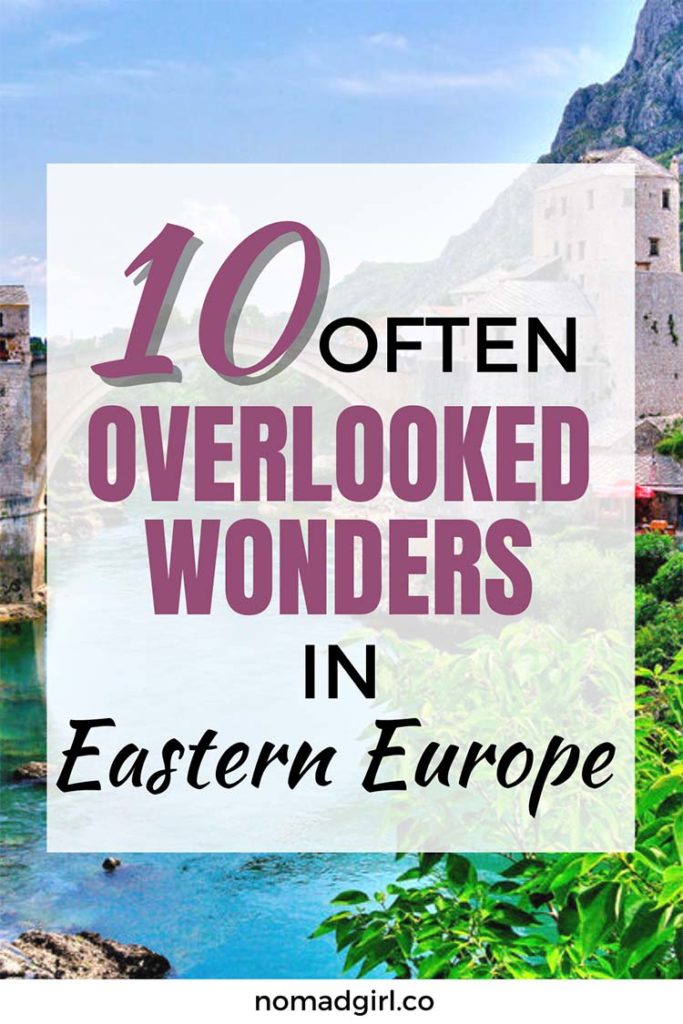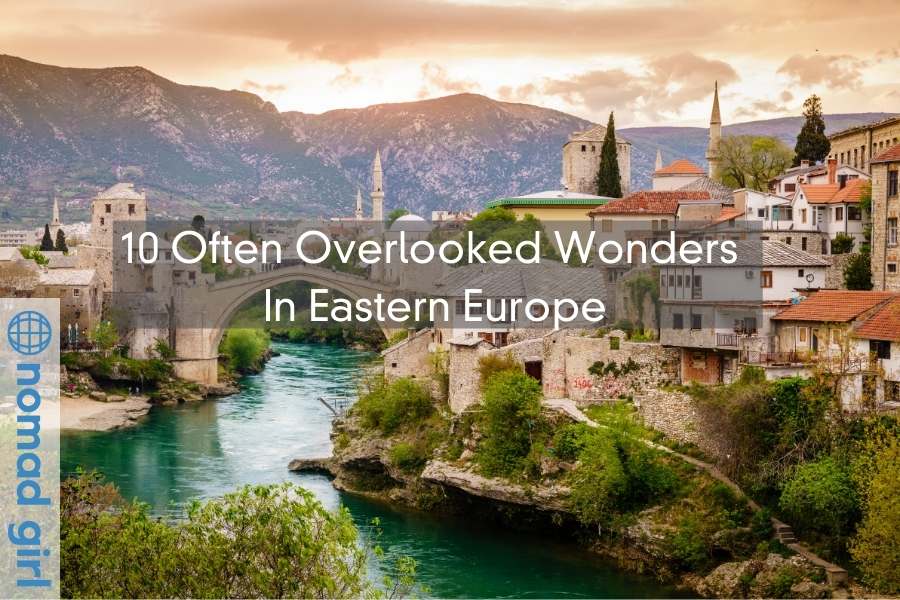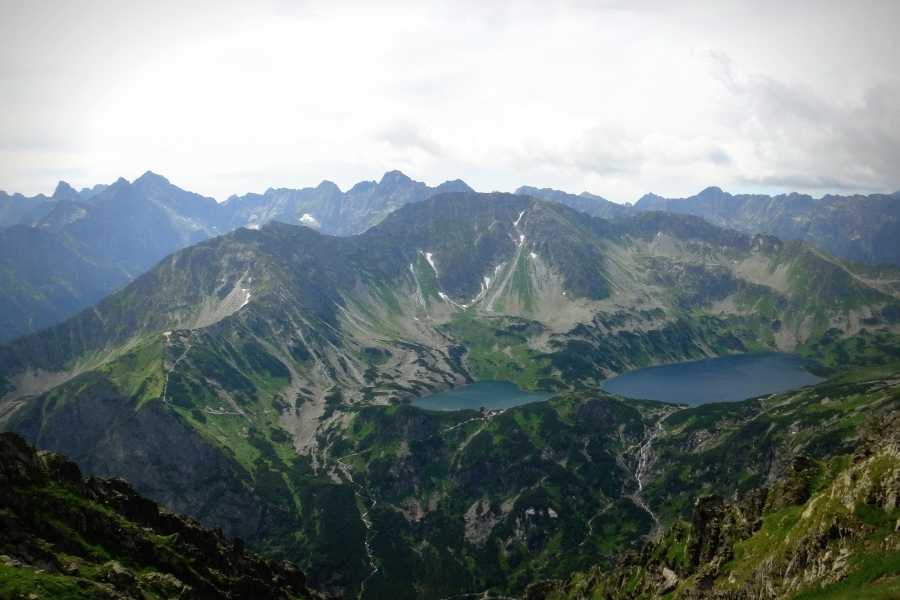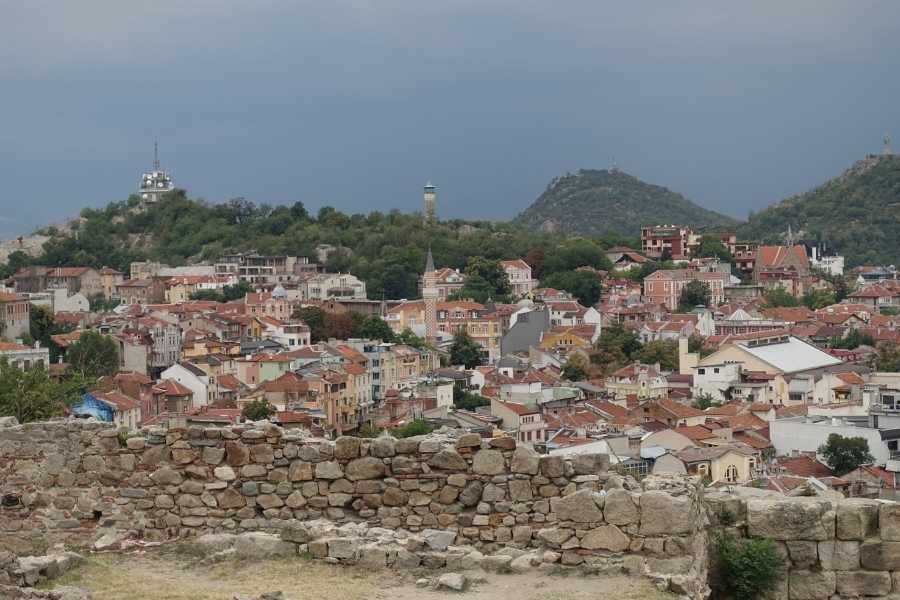There was a time when Eastern Europe was the great unknown, hidden away behind the impassable Iron Curtain. But, following the end of the Cold War, it wasn’t long before travellers started venturing east to explore the endlessly diverse culture and landscapes of this region of Europe. Although exactly which countries make up Eastern Europe is a contested question, subject to constantly changing political, economic and geographical considerations, one thing can be said for certain: it’s a treasure-trove of cultural and natural wonders. Here are 10 often overlooked wonders in Eastern Europe.
1 – Gjirokastra, Albania
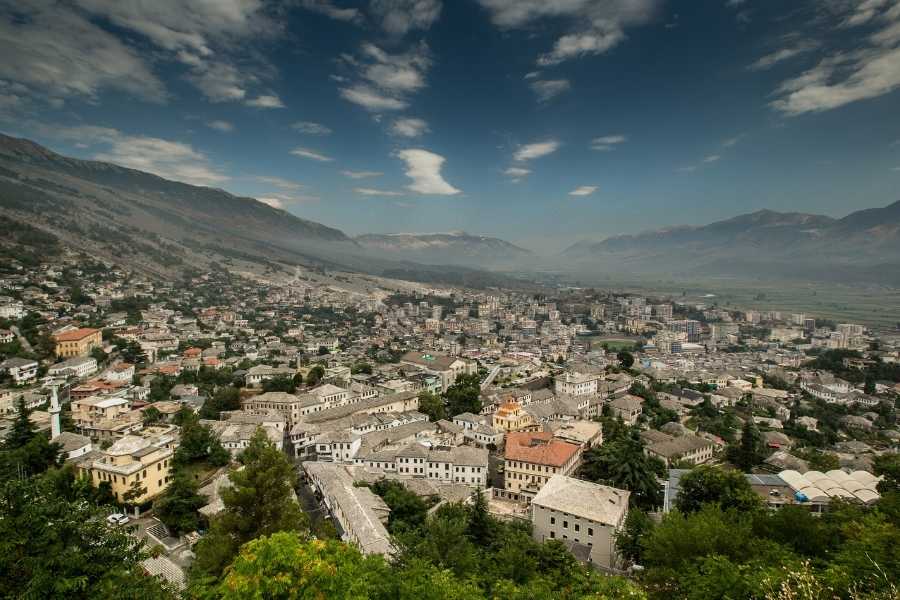
Gjirokastra is situated in the south of Albania, on the eastern side of Mail I Gjerë – the Wide Mountain – and is known as the ‘City of Stone’, for reasons that are obvious as soon as you arrive. You will find yourself surrounded by stone for the length of your stay, from the slate-roofed houses that all look like tiny stone fortresses to cobblestone streets made from limestone and shale.
Enjoy the majestic views of the Drina Valley, pay a visit to the city’s castle, the largest in Albania, and enjoy everything this Ottoman-era UNESCO World Heritage site has to offer.
2 – Dilijan National Park, Armenia
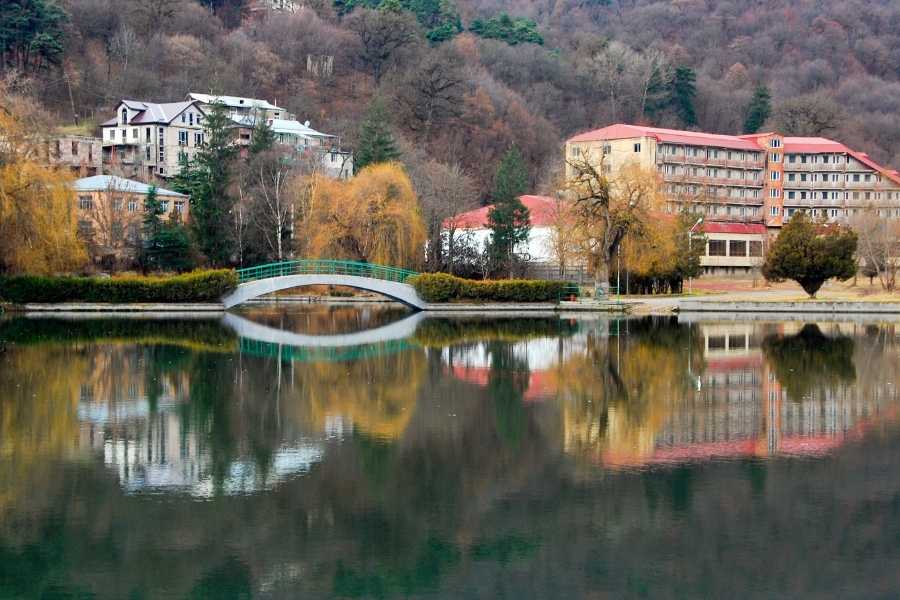
Famous for its healing waters, Dilijan National Park is a verdant green wonderland. With its fertile forests and mountain gorges, it has earned the nickname “the Switzerland of Armenia.” A wealth of biodiversity makes this a point of scientific interest: a rich range of different terrains, climates, soils, and water sources.
Roam the lush woodland, marvel at the steep limestone slopes, relax in alpine meadows, and visit charming farms and secluded monasteries. This is ideal hiking terrain, with lakes and rivers where you can cool off, but it’s just as suited to rock climbing, and, in the winter, skiing.
3 – Nis, Serbia

Nis, Serbia’s third-largest city, is where east meets west and old meets new. Driving through Niš is the shortest way to reach the Middle East from Europe, while the city’s buzzing, youthful energy – thanks, in part, to the large student population – finds the contrast in its ancient archaeological wonders. Its historic relics include the Mediana and the dark and sinister Ćele kula, or Skull Tower, a structure built using the skulls of Serbian soldiers killed in the Battle of Čegar during the First Serbian uprising in 1809.
Less morbid are the hip new cocktails bars, hidden away in winding streets, as well as pop-up markets and fairs, stalls selling delicious barbecued meats, and the city’s vibrant music scene, which includes the Nišville jazz festival.
4 – Durmitor National Park, Romania
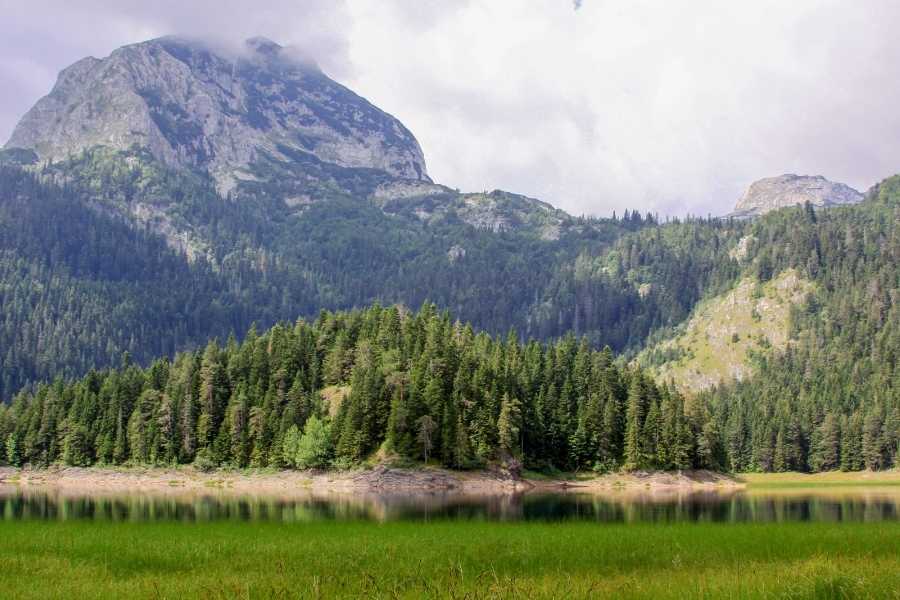
Admittedly, Montenegro is well-known for its majestic mountains. But mountains don’t come much more mighty and majestic than Durmitor National Park in Romania. Carved out by glaciers and underground streams, Durmitor’s staggering peaks, vertigo-inducing canyons, dense pine forests, and picture-perfect glacial lakes, known by the locals as ‘mountain eyes’, redefine breath-taking.
This is a landscape of great contrasts: the highest peak is Bobotov Kuk, at 2523m, while the Tara river canyon is the deepest gorge in all of Europe. It is also home to 163 different bird species, 50 types of mammals – including brown bears, grey wolves, and wild cats – and apparently the greatest variety of butterflies in all of Europe. Travellers come here to ski, or, in summer, enjoy hiking, rafting, and other adrenaline-pumping pursuits.
5 – Budva, Montenegro
When you think of European beach resorts, it’s unlikely that little-known Budva makes your list. But it deserves a place and a high-ranking one at that. Rugged limestone mountains dropping down to a winding coastline, lapped by the Adriatic, Budva is barely given a glance by most tourists, who head with a blinkered vision to the beaches of nearby Croatia. But, with its secluded cloves and pristine sand beaches, it should be.
Its picturesque old-town, which lies out on a small peninsular, full of narrow streets and secluded squares, is the ideal place to spend a slow and languorous summer when it becomes one large theatre with local performances and travelling shows.
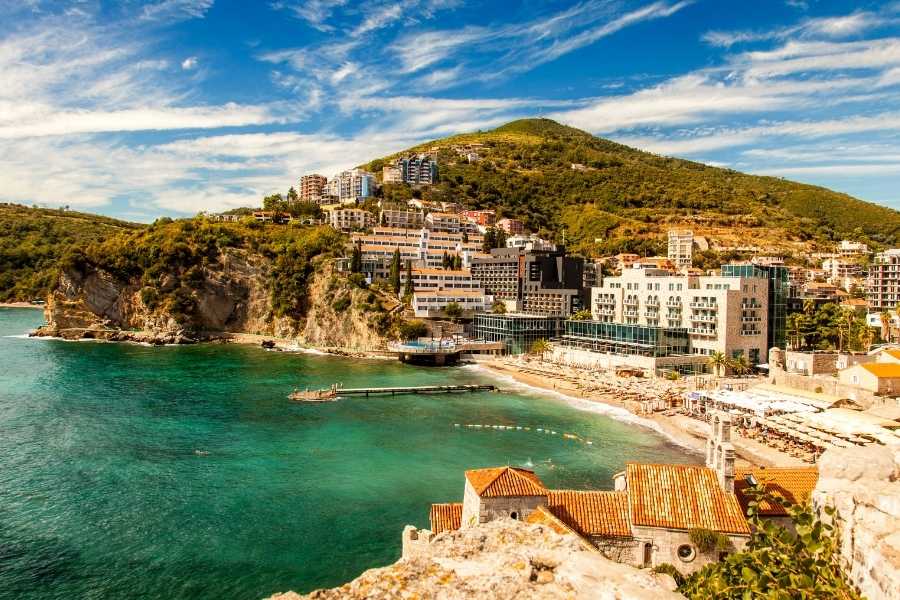
6 – Tatra mountains, Poland
Situated in the south of Poland, the Tatra mountains form the border between Poland and Slovakia. Here you will find dramatic vistas, staggering peaks, rugged rocky outcrops, and, of course, top-quality skiing. Steep gorges and crystal lakes will have you reaching for your camera, while the thickly forested lower slopes are home to endemic species including the Tatra chamois, bears and lynx.
Of particular note is Rysy peak, at 2499 metres, with its view of one hundred different peaks and twelve lakes. Or you could head to the main mountain resort in the area, Zakopane, to experience the unique Polish highland culture of the Gorals.
7 – Ohrid, North Macedonia

On the banks of the lake of the same name, Ohrid is an increasingly enticing summer destination. Built on a hill and surrounded by rugged cliffs, it is a city of enchanting churches, terracotta roofs, stone streets, lakeside cafes, and sandy coves – a gem that has, remarkably, up until now been spared the stomping feet of mass tourism. This beachside town is ideal for a restful, indulgent getaway with its laidback atmosphere and sleepy, seductive charm.
8 – Belovezhskaya Pushcha, Belarus
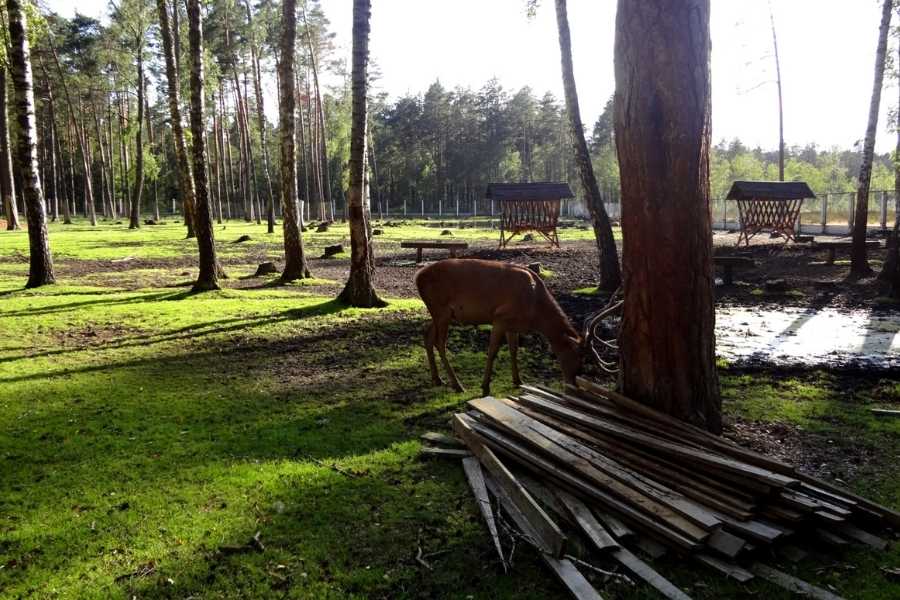
Straddling the border between Poland and Belarus, Belovezhskaya Pushcha National Park is part of Białowieża Forest, the final fragment of primeval forest left in Europe, a stretch of woodland that once reached across the European Plain. Come here to wonder at the incredible wildlife: the park is home to a huge number of bison, as well as wild boar, elk, and wild horses.
Tourists rarely visit, put off by the lack of facilities and infrastructure. But this makes it all the more special: a little-known, little-touched wilderness, providing a glance into what life might have been like on the European continent many centuries ago.
9 – Plovdiv, Bulgaria
As it currently stands, Plovdiv is a secret. But its days as unchartered tourist territory are numbered. Give it a couple of years and it may well head the same way as Dubrovnik. But for now, at least, you can enjoy the delights of this elegant, enthralling town without sharing it with hundreds of others.
Delight in refined revival-era houses, trendy art cafes, and jazz bars – not to mention the tiny, unassuming bakeries that sell greasy delights called banitsa, best drunk with boza – a wheat-based drink. And, with the Balkan mountains on one horizon and the green slopes of the Rhodopes on the other, Plovdiv is are not lacking for natural beauty either.
10 – Mostar, Bosnia and Herzegovina
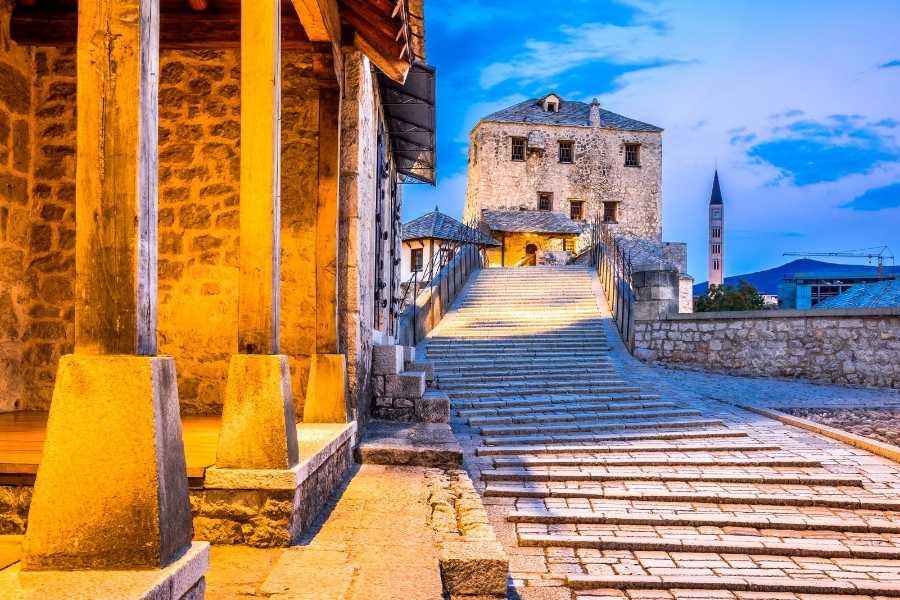
Although famed for the Stari Most, a 16th-century Ottoman bridge crossing over the Neretva River, Mostar is so much more than a home to this majestic piece of stone engineering. Here you will also find buzzing bazaars, riverside cafes, street peddlers, delicious Turkish coffee, and the spectacular nearby waterfalls of Kravice lake. And, of course, you can also watch the locals throw themselves off the bridge – as part of an ancient and gasp-worthy tradition.
Eastern Europe is no longer off the tourist trail. But destinations still exist that are – somewhat pleasingly – ignored by the hoards. Magical historic towns, UNESCO World heritage sites, striking natural beauty, and a continual supply of unique photo opportunities: head there now, before everyone else does.
If you like this article please use the image below to share it via Pinterest.
